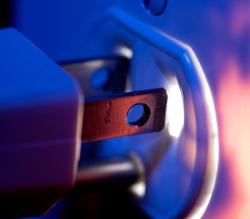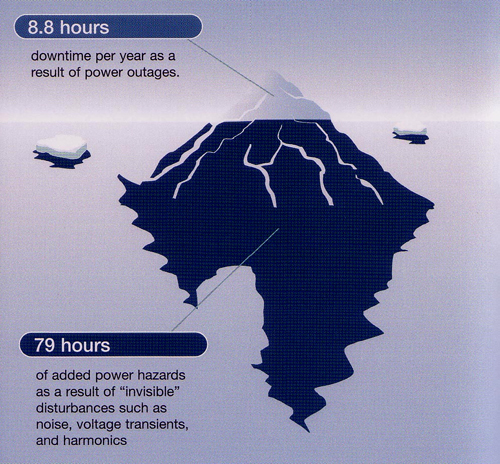
It’s not uncommon to find UPS systems with inverters that create non-sinusoidal (square wave or modified square wave) waveforms. These designs often exhibit incorrect output voltages, are high in harmonic distortion, contain significant voltage transients and noise, and are generally unsuitable for use with sensitive electronic systems when ultimate reliability and performance are important goals. So exercise care when evaluating and selecting UPS technology.
Frequency Regulator. AC power in North America is generated at a frequency of 60 Hz (60 cycles per second, while in Europe and much of the rest of the world, AC power is generated at 50 Hz.
In most developed countries, frequency regulation is not required since electric utilities generate power that is frequency stable. This is not necessarily true for developing or emerging countries. Where frequency regulation is required, a good solution is the inverter of an on-line UPS, which tightly regulates frequency as a by-product of its double conversion operation.
Ground Conditioning. Different components of an interconnected system are frequently not all at the same chassis potential with reference to ground. The result is a ground loop, which becomes a convenient path through which equalization current begins to flow (60 Hz. equalization currents are the most recognizable since an audible hum is the usual symptom).
But ground loops exist at other frequencies as well, some of them high enough to alter or interfere with data communications when the ground loop occurs in the shield of data, signal or communication cables. One method for addressing them is to power all system components from a commonly grounded source.
Another is interconnecting components with fiber optics or employing opto-isolators. New technology also exists where a specially designed inductor is placed in series in the safety ground conductor of the electrical supply to prevent high frequency noise from gaining entry to a system’s communication, data, and signal cabling. This technique is known as ground conditioning.

ALREADY RELIABLE, BUT…
In a recent study, the Electric Power Research institute (EPRI) discovered that the average, well managed electrical supply system in North America experiences about 8.8 hours of power outages annually, which translates to a reliability rating of about 99.9 percent.
This research goes on to state that when all other power disturbances are factored in, the average reliability level drops to 99 percent, or approximately 79 more hours per year in which the quality of electrical power is not satisfactory for the needs of electronic systems. Like an iceberg, the power disturbances we don’t see are the ones that are truly problematic.
Earlier we looked at how much the audio industry depends on its electronic systems to function reliably, with no failures, and at the highest level of performance. Therefore, it’s vital to stop thinking one-dimensionally about power protection and to start thinking comprehensively about the issue of power quality.
Only when we address start with the ABCs and consider all four Ds when formulating any power solution can we guarantee we begin to master our electronic tools – not be their victim.
Dennis Ver Mulm works with POWERVAR, based in Lake Forest, Illinois.
